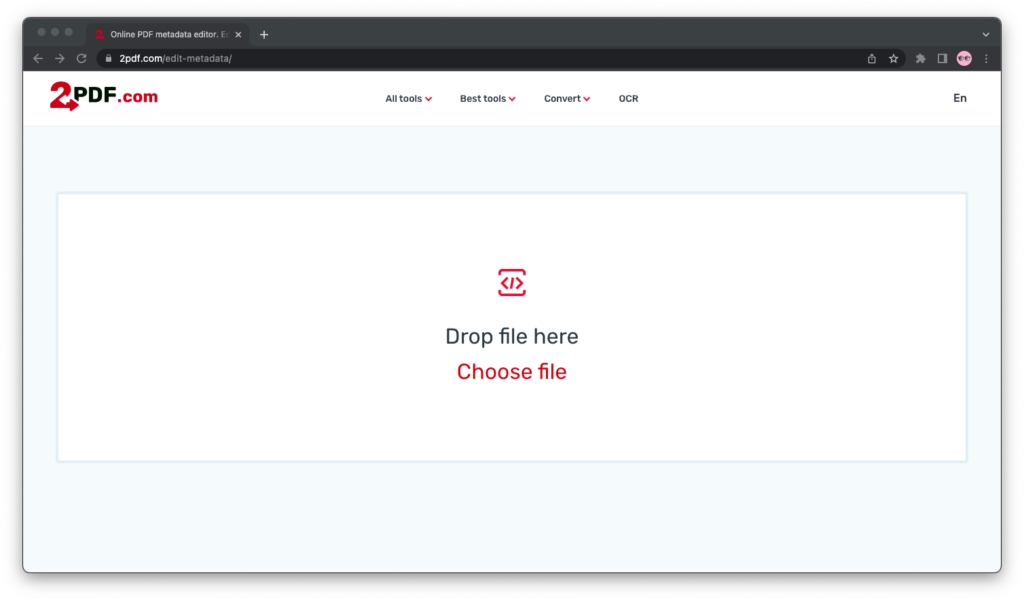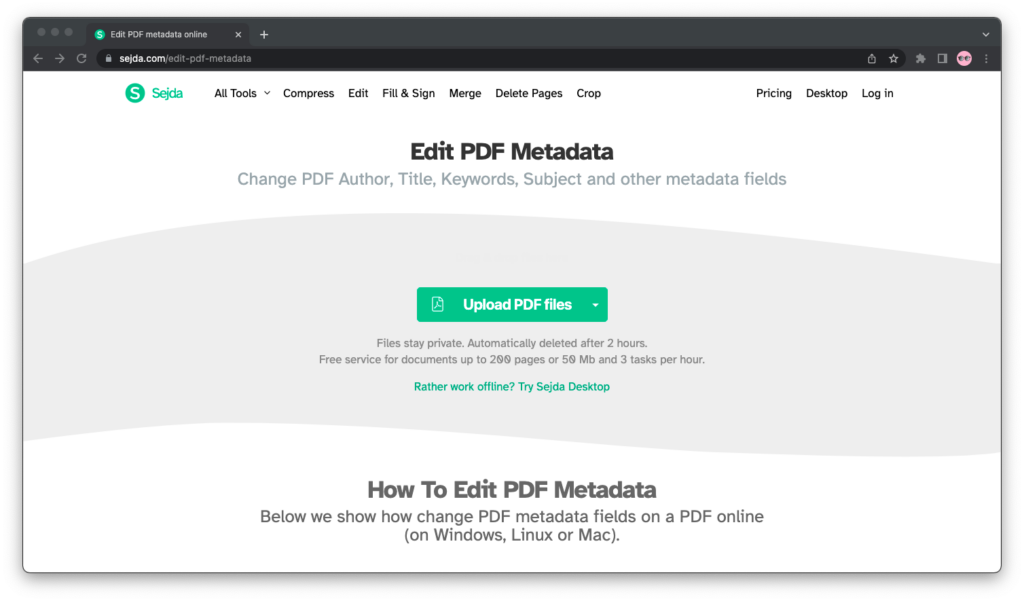When you view a PDF document, you can get information about that document by looking at its metadata.
Information such as the title, subject, author, and keywords of the document. Sometimes, this information was set by the person who created the document. Othertimes, it was generated automatically by the app that they used.
When you export a PDF document from an app, be it Adobe Acrobat, Microsoft Word, or Canva, you may not always want to keep that metadata before sending the PDF document to a client or publishing it on the web.
This begs the question: How can you view, edit, and delete PDF metadata?
Many online tools let you view, edit, and delete metadata in PDF documents for free, no strings attached. The two most popular by far are 2pdf.com and Sejda.
In the rest of this post, I will show you exactly how to do this with each of these tools.
With 2pdf.com

2pdf.com is a free, ad-supported suite of PDF tools that work on all platforms and browsers. All PDF files you upload to the tool can be viewed only by you, claims its website, and are deleted after 24 hours.
This is my tool of choice when I need to change metadata in a PDF file (or strip it from that file altogether). The only downside is that you need an Internet connection to use it, so it’s not ideal for when you’re on the road.
How to use it:
Step 1. Go to 2pdf.com/edit-metadata/.
Step 2. Click on “Choose file” or drag and drop your PDF document into the gray rectangle with the red border.
Step 3. You will now see all the metadata of your PDF file in editable fields. Edit them as you like and then click the “Update PDF Metadata” button.
(Optionally, you can also add metadata to your PDF file. You need to specify a name and a value for each item of metadata added.)
Step 4. Download your PDF document.
With Sejda

Sejda is another suite of free PDF tools. Just like 2pdf.com, you can use it through your web browser. However, you can also download the desktop application for Windows, Mac and Linux if you prefer to work locally.
Your files remain private, according to Sejda’s website, and all files are automatically deleted after 2 hours. The free version of the tool is limited to 200 pages or 50 MB and 3 tasks per hour. Paid plans start at $5 for a week, $7.5 for a month and $63 for a year.
How to use it:
Step 1. Go to sejda.com/edit-metadata/.
Step 2. Click on “Upload PDF files” or drag and drop your PDF document into the gray wave.
Step 3. You will now see all the metadata of your PDF file in editable fields. Edit them as you like and then click the “Update PDF Metadata” button.
(Optionally, you can also add metadata to your PDF file. You need to specify a name and a value for each item of metadata added.)
Step 4. Download your PDF document.
Understanding PDF Metadata
Metadata, as defined by the Merriam-Webster dictionary, is data that provides information about other data.
For all PDF documents, the metadata is defined and stored in the form of name/value pairs. For example, a PDF document might contain information about its author in the following name/value pair:
| Name | Value |
|---|---|
| Author | Jim Stonos |
Apart from the structure (name/value pairs), there are no strict limits to the type or amount of metadata a PDF file can contain. That said, almost all PDF files have metadata about:
- Author, meaning the person, collective, or organization that created the document.
- Title, typically the same title that’s on the cover page of the document.
- Subject, which many authors use to add a longer description of the document about as long as a tweet.
- Created On and Modified On, which indicate, respectively, the date and time at which the document was created and last edited.
- Creator, different from author. Most apps, including Canva, add their brand name here.
- Keywords, which often store encoded licenses for the document and/or any stock media that it contains.
As we already touched on, you’re not necessarily limited to these types of metadata and you can add any name/value pair—and as many name/value pairs—to your PDF file as you need to.

